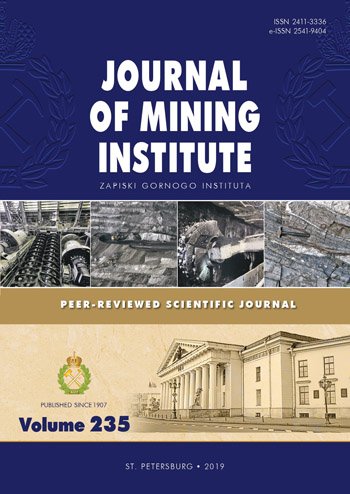Factors affecting bacterial and chemical processes of sulphide ores processing
- Ph.D. Senior researcher Scientific Research Geotechnological Center Far Eastern Branch of Russian Academy of Science
Abstract
Extraction of valuable components from sulphide ores using microorganisms is a recognized biotechnological method, combining several advantages over traditional methods of mineral processing. This paper presents the main factors affecting the bacterial-chemical leaching and methods of leaching with the participation of microorganisms. Some physical-chemical (temperature, pH, oxygen, carbon dioxide, nutrients, metals and other chemical elements) and microbial (cell count and microflora activity) properties are given, either directly or indirectly (suppressing or contributing to the growth and oxidative capacity of microorganisms) affecting the kinetics of the process. The paper discusses the characteristics of the mineral substrate, including galvanic interaction of sulfide minerals and the formation of passivating layers on the surface of the ore during oxidation, emphasizing the importance of the electrochemical interaction of the components of the leaching system. Bioleaching is a complex process, which is a combination of mainly chemical reactions mediated by the microbial component, therefore, to improve the kinetics, it is necessary to consider, monitor and regulate the listed range of factors.
